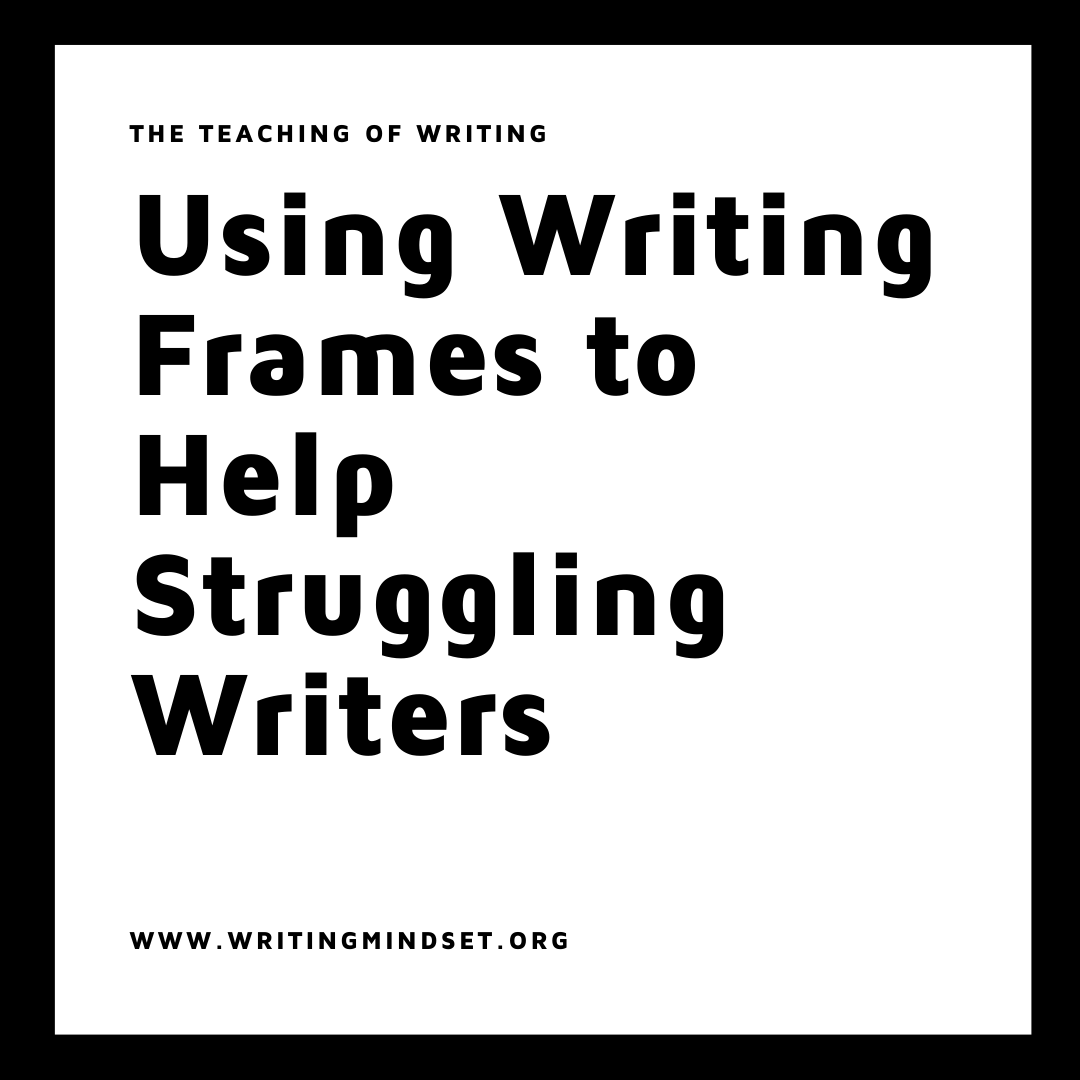Using Writing Frames to Help Struggling Writers
Writing Frames vs. The Writing Achievement Gap
If you haven't picked up on my vibes that I have been throwing out so far...the Achievement Gap is my nemesis. Not the kind that you read about in text books. Not that kind with data...necessarily. The kind where my general English Language Arts students and my advanced English Language Arts students are more than 3 grade levels on average apart from each other in terms of reading, writing, listening, and speaking skills.
Now, I have many theories as to how this works. However, I am NOT going to be the lady that points the finger to the teacher that came before me (Those finger points are saved for institutional racism, socioeconomic status disparities, lack of adequate resources, lack of training, equity vs. equality issues, etc.) I am going to offer a step-by-step approach or intervention for the struggling writer using writing frames as a solution for solving the gap.
If you haven't picked up on my vibes that I have been throwing out so far...the Achievement Gap is my nemesis. Not the kind that you read about in text books. Not that kind with data...necessarily. The kind where my general English Language Arts students and my advanced English Language Arts students are more than 3 grade levels on average apart from each other in terms of reading, writing, listening, and speaking skills.
Now, I have many theories as to how this works. However, I am NOT going to be the lady that points the finger to the teacher that came before me (Those finger points are saved for institutional racism, socioeconomic status disparities, lack of adequate resources, lack of training, equity vs. equality issues, etc.) I am going to offer a step-by-step approach or intervention for the struggling writer using writing frames as a solution for solving the gap.
The first time I used Writing Frames, I was buried deep within Gerald Graff's They Say I Say. This is a book that preaches the ideals of using sentence starters because they give students a voice. Ah, a voice. This matters. This book also specifically speaks to the academic writer; thus impacting expository and argumentative writers where they need it the most-including evidence in the paper and arguing claims.
I work into my curriculum time for creative writing, but I find right away that my general students are way behind my advanced students in terms of academic writing ability. So behind that in fact by the end of the year, my advanced students have written a MLA Research Paper with Works Cited page and my general students are still working on paragraph formation. Not this year. This year, my general education students will have completed a 4 paragraph research article that includes references to sources. BOOM. Closing. the. gap.
Slowly. So, thus here begins the process of helping to scaffold general's approach to research through the use of sentence stems or sentence starters. I don't use fancy anchor charts. The smelly chart makers are NOT used on this. This is good old-fashioned step-by-step approaches to helping students get more independent with writing.
Strategies Using Writing Frames
Step 1: Break Down the Words
Using the lingo is key to closing the gap. Students are often not taught the correct academic words because many feel like they need the "baby" version due to lack of skill. The word "citation" is scary, but as educators we must desensitize the use of the fancy lingo. There is nothing better than a general student asking me, "Is this a good transition?" Why? Because they are using the lingo.
Step 2: Break Down the Steps
I love this part. I love Thinking Maps. This step-by-step guide is so important because I will keep coming back to it. I relate this to something they know: a pattern. Use the pattern each time you write. Like sentence starters and writing frames, once you master one way, you can go outside the box. We have to teach writers how to operate within the framework of prescribed writing before we ask them to become masters.
Step 3: Break Down the Steps Some More
Think of the questions you are going to get before the assignment. I always get this: all three ideas are in one of the paragraphs. So, I'm done right? Nope. Let's make a mind map and lay out our facts that have to do with our research information. These facts are relevant, and I can keep repeating to my students that there is one idea per paragraph. You change ideas? You better have made a transition to a new paragraph.
Step 4: Show a Quality Example. Show Student Examples.
Sentence starters are just empowering. Period. I made a point to reference the step-by-step flow map, and then tell students: "If you get stuck, look at the sentence starters." They would then nod yes with confidence (Not that creepy I'm going to say yes just so you walk away nod...you know the nod). I then come around and ask if anyone has questions. Most of the time, I am not needed.
Step 5: Show Students How You Grade (Walk through the Example)
Not only will I show my student exemplar on the board and we will grade it together, but I will grade student pieces of paragraphs in front of the class. This is a John Collins Writing Strategy called Praise and Grade. They get to see in live action how to make the piece of writing better. The brave student that volunteers? Gets their piece of writing fixed on the spot.







